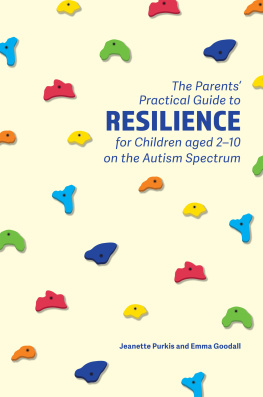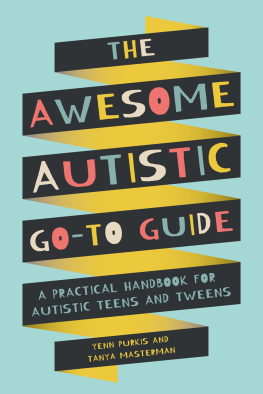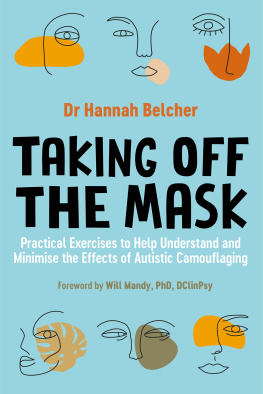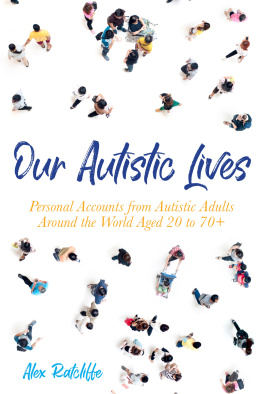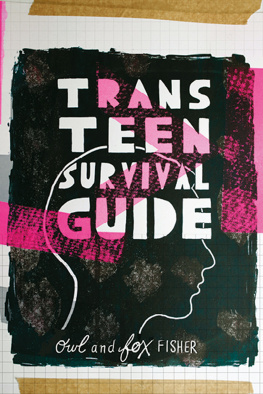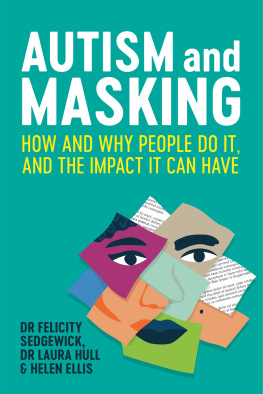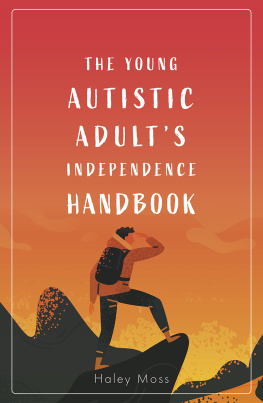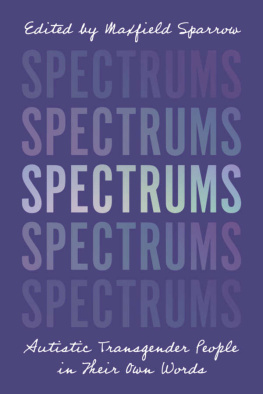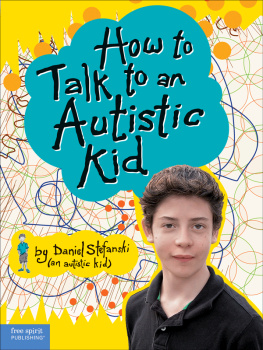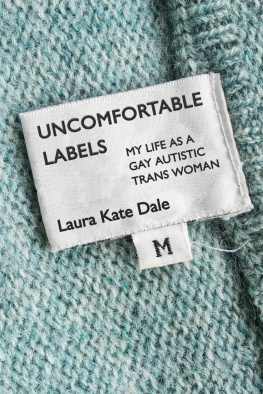Contents

The
Autistic
Trans
Guide
to Life
Yenn Purkis & Wenn Lawson
Foreword by Dr Emma Goodall

Contents
Foreword
This is a beautiful, moving and practical book that blends personal stories with the research literature to present evidence-based and lived experience strategies for living well as a trans or non-binary autistic individual. Case studies, poetry and the sharing of personal stories by the authors are juxtaposed with evidence from current research in the areas of autism and gender diversity.
The premise of this book is a powerful idea: that people can be more content and engaged with life if they are true to themselves in safe environments. This idea gives hope to some of the most vulnerable people in our society those who are both gender diverse and autistic. The intersectionality of belonging to two groups, both of whom are frequently misunderstood by wider society and often stigmatized, is recognized but not dwelled on. Instead, the authors provide a road map to working out what your authentic self is and how you might express that in safe and authentic ways.
I have a passion for providing autistics with useful and practical advice across a range of areas, including sexuality and relationships. In doing this, I have researched the area extensively and come to realize there is very little quality information out there for autistics who are questioning and/or diverse in their gender and/or sexuality. This book fills that gap nicely and will be a great resource for autistics and their families, as well as professionals with whom they seek to walk along their journey of self-discovery and authentic expression of self. The evidence-based explanations around the different ways that us autistics express ourselves are both helpful to me as a professional and as a parent and a wife.
As an autistic cis-female, I have not experienced the depth of distress and joy expressed in Wenns and Yenns journeys, but I can attest to the autistic lived experience of not noticing, not being interested in and not following stereotypical gender norms. As a child, I was a tomboy, a nerd and finally a geek. As an adult, I dress for comfort, which may be girly dresses and flat shoes or stretchy pants and shirts/blouses. Gender is so much more than the way we dress, it is how we feel about and describe our relationship with our bodies and minds.
I encourage you to dip in and out of this book and to savour each part, giving yourself time to process the thoughts and feelings being shared and ponder how this relates to you or someone you are supporting. It will be an emotional experience, but I am convinced it will be healing and helpful for all those gender-diverse and gender-questioning people seeking hope that they too can live a good life, whether or not they are autistic.
Dr Emma Goodall, autism consultant
Introduction
Hello, our names are Yenn and Wenn and we want to introduce ourselves as the authors of this book and to let you know more about our personal stories as trans and autistic adults.
Wenn
I was diagnosed as autistic in 1994, when I was 42 years old.
I knew I was transmasculine in 2013, when I was 61 years old. I grew up a girl and became the man I now am.
CONNECTING TO ME
I have my pen knife in my side pocket,
The fire flames crackle; the damp wood spits,
As Autumn dampness around me sits.
I hear the squirrels, a distant owl,
For evening approaches and dreams warm my soul.
I stand in the corridor, the train window pulled down,
A journey that puffs from village to town.
I study by day and church claims the night,
The hours of listening, of learning about right.
I love the bell ringing and in the choir singing,
Beginning to notice; my inside voices plight.
Creating a life; movement ahoy,
pink for a girl and blue for a boy.
So much love and so much pain,
Its like I am born all over again.
Connecting to self and noticing Other,
Im someones sister; Im someones brother.
My body dictates all these different states.
I cannot feel the sense of whats real,
They both seem to own me,
They compete for a place.
Finally home; my heart can now see.
So I can now welcome, all that is me.
What was your journey to an autism diagnosis like?
My journey to diagnoses was fraught with confusion, misdiagnosis (intellectual disability, schizophrenia), depression and lots of misunderstanding of my behaviour. Finding medical professionals who understood what was happening to me was elusive. I spent 25 years in and out of mental health facilities with years of antipsychotic medications and other medicines, such as SSRIs (selective serotonin reuptake inhibitors) for anxiety and depression. I was over 40 years old when I finally had an appropriate assessment for autism.
What is being an autistic person like for you?
This is a strange question because I only know myself as me. So, being autistic is normal for me. I cant imagine myself any other way. I sometimes wish I didnt have the difficulties that I do, but I wouldnt give up being me, and these difficulties along with my strengths (that autism gives me) are part and parcel of who I am.
What are you writing about in this book on autism and gender identity?
In this book I and my co-author are specifically writing about autism and gender dysphoria and gender identity in autism. There are as many gender identities as there are other differences between people. Gender dysphoria (a mismatch between the gender you were assigned at birth and the one(s) you feel at home in) in autism is only starting to become understood.
What would you say is key to understanding gender dysphoria in autistic people?
Gender dysphoria (GD) in autism doesnt necessarily have only one explanation. However, the key message is that if we dont take this seriously, up to 40 per cent or more of our population will be living with such discomfort, confusion of self-identity, poor mental health, difficulties focusing at school and at work, and incredible struggles fitting into traditional gender roles, or a total disregard for social norms/expectations, that suicidality seems like their only option. So, the key message here is one of listen and act or the opportunity for that person to live a connected and meaningful life might be totally and permanently lost.
What are the specific difficulties of being an autistic person experiencing gender dysphoria?
Again, specific difficulties for autistic GD individuals will vary. These range from a belief that they should be free to be themselves (e.g. a 6-foot-tall bearded male with a deep voice seeing no reason that they cant walk down the high street in a dress, because they know they are female) without any need to medically or socially transition; to an individual longing to socially and medically transition into the appearance and outer shell of the gender they know themselves to be but dont have family or financial support to do so. There are also many other hurdles to get over, such as not coping with invasive medical tests due to sensory discomforts. So, there are environmental, social, personal, family, religious, physical and financial challenges, let alone finding an accepting community where whoever you are you are welcome and can take time to discover and grow into being yourself.
Do you agree with recent research that suggests gender identity variance and gender dysphoria may be more prevalent in the autistic population?


